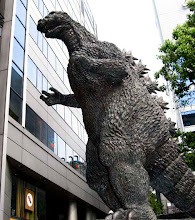

The rings of Saturn are the most extensive planetary ring system of any planet in the Solar System. They consist of countless small particles, ranging in size from micrometres to metres, that form clumps that in turn orbit about Saturn. The ring particles are made almost entirely of water ice, with some contamination from dust and other chemicals.
Although reflection from the rings increases Saturn's brightness, they are not visible from Earth with unaided vision. In 1610, the year Galileo Galilei first turned a telescope to the sky, he became the very first person to observe Saturn's rings, though he could not see them well enough to discern their true nature. In 1655, Christiaan Huygens was the first person to describe them as a disk surrounding Saturn. Although many people think of Saturn's rings as being made up of a series of tiny ringlets (a concept that goes back to Laplace), true gaps are few in number. It is more correct to think of the rings as an annular disk with concentric local maxima and minima in density and brightness.[citation needed] On the scale of the clumps within the rings there is a lot of empty space.
There are several gaps within the rings: two opened by known moons embedded within them, and many others at locations of known destabilizing orbital resonances with Saturn's moons. Other gaps remain unexplained. Stabilizing resonances, on the other hand, are responsible for the longevity of several rings, such as the Titan Ringlet and the G Ring.
Well beyond the main rings is the Phoebe ring which is tilted at an angle of 27 degrees to the other rings and like Phoebe has a retrograde orbit.




No comments:
Post a Comment